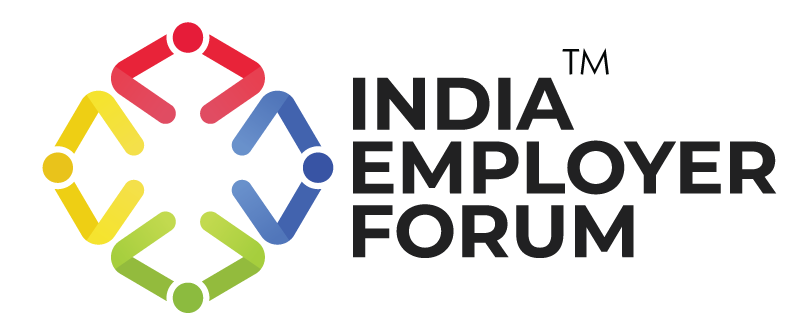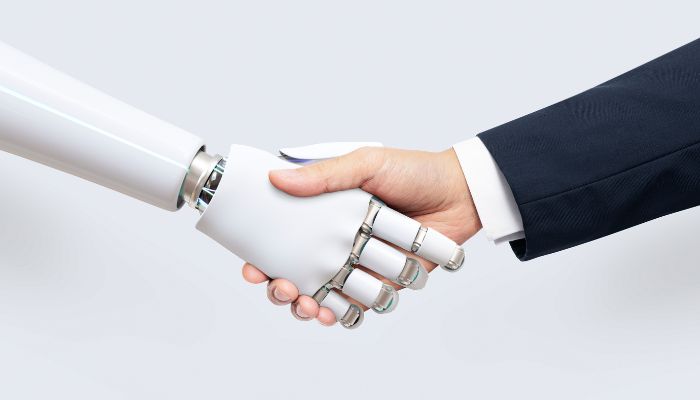Artificial Intelligence has become the architect of enterprise transformation. Across sectors, AI is reshaping business models, operational structures, and leadership mandates. CXOs today are expected to be AI-first strategists, embedding intelligence into every decision layer. In India, this shift is amplified by the rise of Global Capability Centers (GCCs) and accelerated AI adoption across tech and non-tech enterprises.
Yet, a critical gap is emerging: employees are adopting AI with speed and confidence, whereas many leaders, though acknowledging its urgency, continue to struggle in articulating a clear strategic plan and vision. This mismatch highlights the need for organizations to align strategy with workforce readiness to truly unlock AI’s potential. What employees want is clear: training, opportunities to participate in pilots, and recognition that encourages adoption at scale. The real bottleneck is not employee readiness, but leadership hesitation. By underestimating adoption and underinvesting in training, leaders risk slowing momentum and falling behind. In this article, we examine how Artificial Intelligence is reshaping leadership and rewriting the rules of the CXO playbook across sectors.
The Leadership 2.0: What’s Changing?
We are living in an era that is described in many ways: Industry 4.0, the Digital Age, and the Cognitive Society. Regardless of the label, this is a time of multi-dimensional transformation with no historical precedent. AI, IoT, blockchain, quantum computing, and machine learning have blurred the lines between the physical, biological, and digital worlds. For leaders, this shift demands a new mental model, one that shifts from managing scarcity to navigating abundance and complexity.
In this new context, Leadership 2.0 is emerging with three defining characteristics:
- AI-Led: Every business function is embedding AI into its decision-making. Leaders are now strategists who must guide not only people but also algorithms.
- Cross-Functional: CXOs can no longer operate in silos. They are expected to connect technology, people, and business models into a single cohesive framework.
- High-Stakes: Compensation reflects the weight of AI-driven expectations. According to TeamLease Digital’s recently released report ‘Digital Skills and Salary Primer FY 2025-26’, the once-experimental Chief AI Officer (CAIO) role is now among the highest-paid leadership positions in India, commanding ₹2–2.5 Cr annually.
This evolution underscores a critical truth: leadership is about creating what comes next. To remain relevant, today’s leaders must supplement traditional skills with AI fluency, digital foresight, and the agility to navigate disruption.
GCCs: Birthplace of New Roles
India’s GCCs are rapidly emerging as the breeding ground for new-age leadership roles. With global enterprises setting up AI-powered hubs, leadership mandates are expanding beyond traditional boundaries to include roles such as the Chief AI Officer (CAIO) and the Chief Digital Officer (CDO). The TeamLease report also indicates that while these positions command premium compensation, ₹2–2.5 Cr annually for CAIOs and ₹45 L–₹1.5 Cr+ for CDOs, they also carry high-impact mandates: from building AI guardrails and establishing GenAI governance frameworks to orchestrating digital transformation across global teams. No longer just back offices, GCCs are evolving into innovation engines, setting the global benchmark for how AI-driven leadership is defined and executed.
Tech Sector: From Infrastructure to Intelligence
The technology sector is undergoing its most profound leadership reset, with CXO roles evolving from managing IT infrastructure to orchestrating AI-driven business intelligence. Today’s CIOs and CTOs are no longer focused solely on modernization—they are driving cloud transformation, building robust cybersecurity frameworks, and embedding AI across the enterprise. COOs are moving beyond process optimization to deliver AI-enabled operational agility, harnessing IoT and predictive operations for faster, smarter decisions. Meanwhile, Chief Product Officers (CPOs) are redefining innovation itself by integrating AI into customer analytics, experience design, and product roadmaps.
With compensation ranging from ₹40 Lakh to ₹2 Crore+, AI-ready tech leaders are among the most sought-after executives in the market. A clear shift is evident: tech leaders are no longer infrastructure providers, but platform orchestrators driving not just digital transformation, but also revenue, resilience, and competitive advantage.
Non-Tech Enterprises: AI Everywhere
AI adoption is no longer confined to the tech industry; non-tech enterprises, too, are embedding intelligence across every critical function, from people and finance to marketing and sales. This leadership reset is now industry-wide.
- CHROs are leveraging AI-driven hiring platforms, workforce analytics, and predictive forecasting to reshape talent strategies.
- CFOs are deploying AI for fraud detection, scenario forecasting, and financial modeling, with compensation packages ranging between ₹1–5 Crore for AI-ready finance leaders.
- CMOs are steering the rise of MarTech ecosystems, CRM automation, and hyper-personalized campaigns, making marketing more data-led than ever.
- Sales leaders are adopting conversational intelligence and AI-powered enablement tools to boost conversion rates and sales efficiency.
Even in so-called traditional industries such as BFSI, healthcare, and manufacturing, AI is being embedded into compliance frameworks, R&D pipelines, and customer experience models. The reset is clear: leadership in non-tech sectors is currently as AI-centric as those in technology enterprises.
The Pay Premium: Why Skills > Titles
The leadership pay curve in India is undergoing a massive shift; compensation is now defined by fluency in AI, cloud, and data rather than traditional skills.
- CAIOs and AI Governance Leaders are emerging as the highest-paid executives, drawing ₹2 Cr+ annually, as enterprises prioritize responsible AI adoption and scalable governance models.
- CXOs with AI fluency (CHROs, CMOs, CFOs) are commanding 30–50% higher salaries than their peers without AI capabilities. Their ability to embed AI into workforce planning, customer experience, and financial modeling has become a direct driver of business value.
- The old “title premium” is rapidly fading. A CHRO without AI-driven people analytics expertise or a CFO without AI forecasting tools is likely to be outpaced in both relevance and rewards.
- Companies are rewarding skills-first leaders who can accelerate transformation, with AI-ready leadership proven to deliver 1.4–1.8x faster ROI on digital initiatives.
Even in the traditionally conservative industries like BFSI, healthcare, and manufacturing, AI-literate leaders are seeing steep salary escalations. The economy has moved to a pay-for-capability model, where leadership success is measured less by the chair you hold and more by the skills you bring to the table.
Challenges in this Reset
Every transformation brings its own challenges, and the shift into the AI-powered leadership era is no different. This new era comes with hurdles that leaders must be ready to navigate.
- India’s AI journey is full of opportunities but also key challenges. The first is a conflicted workforce, employees are eager to use AI but concerned about job displacement. Globally, AI could displace 9 million jobs in five years while creating 11 million. Leaders must combine empathy with strategic adoption to ease fears.
- The second is AI governance and security. Many companies still lack proper guardrails, increasing the risk of data leaks or compliance issues. For Indian GCCs and enterprises, setting standards for AI usage, accountability, and secure data handling is critical.
- The third and most critical challenge is the skills gap. A skilled workforce is the cornerstone of industrial growth and economic prosperity. Many industries are grappling with an ever-widening talent gap, as the shortage of skilled professionals continues to impede business expansion, curtail economic development, and constrain individual potential. This challenge highlights the urgent need for innovative and targeted approaches to skill development.
- Ultimately, the leadership bottleneck is a genuine concern. Boards also face alignment challenges, balancing AI risk, ESG mandates, and long-term strategy. Closing these gaps is essential to accelerate India’s AI-powered growth.
The Future of Leadership 2.0
The CXO playbook has been rewritten. AI is not replacing leaders; it is reshaping their mandates, capabilities, and accountability. Tomorrow’s leaders will succeed by combining AI fluency with strategic foresight and human-centric leadership. They must understand, deploy, and govern AI-driven decisions while aligning AI initiatives with long-term business resilience and growth. At the same time, they need to balance automation with people-first values to inspire, engage, and retain talent. In this AI-powered era, leadership is no longer defined by titles or hierarchy; it is defined by skills, vision, and the courage to drive transformation.
The playbook has changed. The real question is: are today’s leaders ready to step up and lead in the age of AI?






